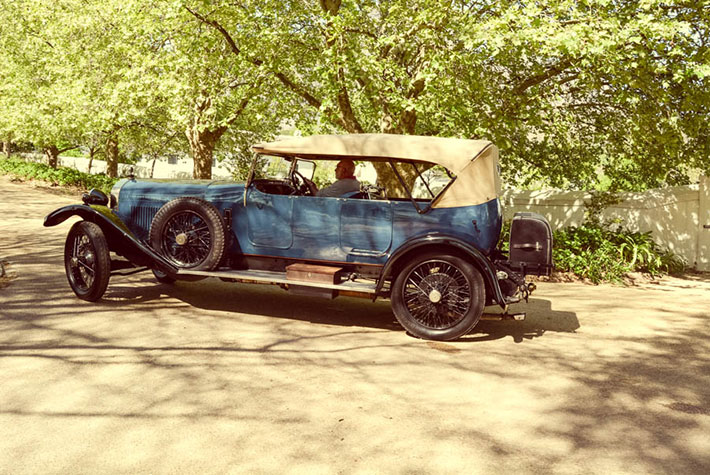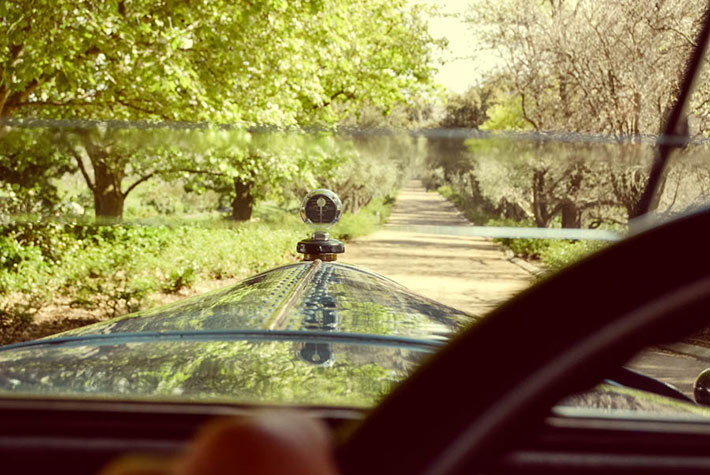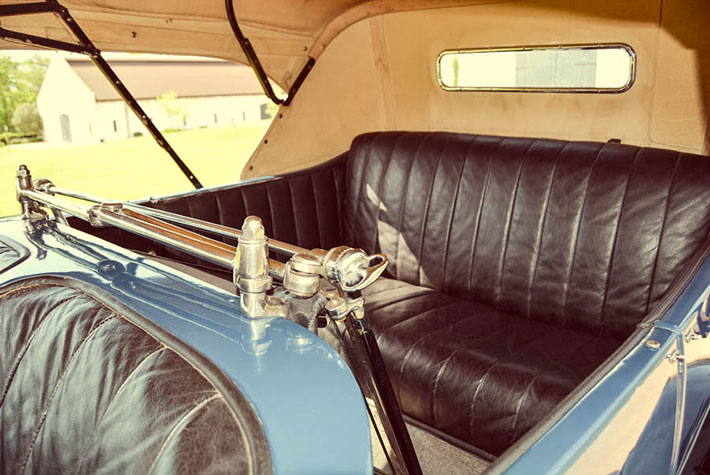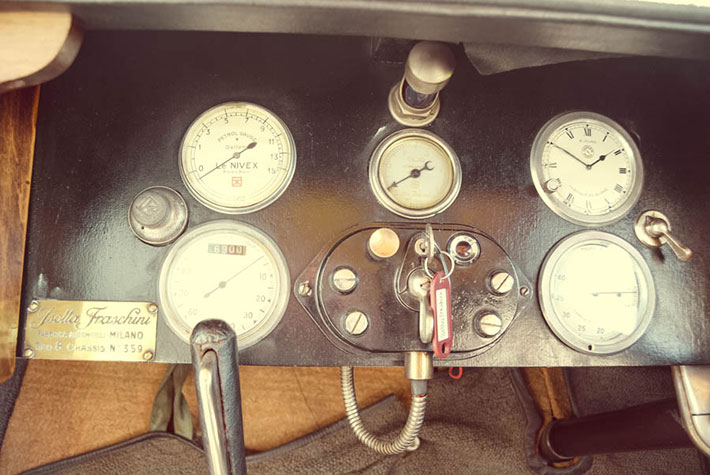
24 Sep COLLECTION IN ACTION – I
An alphabetical series of short driving impressions of some of the museum’s car collection. This month we step aboard the majestic 1922 Isotta Fraschini, a rare Italian thoroughbred with quite a history.
It never ceases to amaze me how one can come across a vehicle that simply takes your breath away with its sheer presence only to find it has a history that often beggars belief. The Isotta Fraschini that is regularly put on display is a case in point. This dramatic dark-blue-and-black 1922 Type 8 touring car is a rare example of an Italian brand renowned for building some of the most luxurious and prestigious ever built, yet this very car once existed only as a pile of bits scattered over a field…
Società Milanese Automobili Isotta, Fraschini & Co. was founded on 27 January 1900 by Cesare Isotta and the brothers Vincenzo, Antonio and Oreste Fraschini. Their motto was ‘Import, sell, repair cars’ and the company began its business by assembling Renaults before moving on to producing its own vehicles in 1904. There was a brief merger with French automaker Lorraine Dietrich in 1907 but the company was very forward thinking in its approach and recognised the value of motor sport in those times, winning the Targa Florio in 1908 with an 8-litre car while also running a team of voiturette racers with a four-cylinder, 1,2-litre overhead-cam engine designed by none other than Ettore Bugatti. In 1910, all Isotta Fraschinis featured four-wheel brakes. An enormous, chain-drive 11-litre car appeared in 1913 before the company’s most popular model appeared at the Paris Show in 1919, the Tipo 8.
It was an uncomplicated chassis with a 3 683 mm wheelbase, 1 422 mm track and semi-elliptic springs at all four corners. The engine was a massive 5,9-litre monobloc straight-eight – the first such layout to be fitted to a production car – with nine main bearings, aluminium pistons, and a gear-driven camshaft operating pushrod overhead-valves. There was no external intake manifold: the two carburettors were attached directly to the block. Continuing the aesthetic theme, even the spark plug leads were hidden in a conduit attached to the block. Mated with a three-speed gearbox, it developed 60 kW at around 1 800 r/min and delivered a top speed approaching 140 km/h.
This particular car – chassis number 359 – was found in pieces scattered over 30 hectares of the majestic Prynnsberg Manor Estate near Clocolan in the Free State, which was built by diamond mining magnate Charles Newberry. However, after his death, family heirs steadily let the property decline to a near ramshackle state – and that is another story… Back to the point: despite appearing to have little more than scrap value, the remnants were purchased (with some trepidation) by well-known South African classic car collector Waldie Greyvensteyn, who set about rebuilding the car. A number of vital parts were missing and were replaced with spares from other collectors or remade – except for the crown-wheel-and-pinion. After 18 months when all hope of finding a cwp was lost, the missing item was located in a scrapyard in Cornwall, England, and after some ‘gentle persuasion’ on the dealer, the vital component landed in SA.




It took a further three years to bring the once dismembered Isotta Fraschini back to its former complete glory. As the Tipo 8 was a chassis only, bodies were supplied by various coachbuilders from around Europe and plates on the door sills proclaim that this car has ‘Coachwork by Cowley Coach & Motor Co, Cowley Peachy, Midx’, which denotes an apparently prestigious coachbuilding operation based in Cowley Peachey (with an ‘e’!) in Middlesex, England. Research on this company revealed a slightly mysterious connection with an R H ‘Bill’ Beverton, who appears to have been a director of the firm who also held an agency for Isotta Fraschini and was linked with Tony Lago of Talbot-Lago fame. And yet another piece of intrigue surrounding this car is a letter written to Waldie from the daughter of a female Newberry descendent stating that her mother remembered the car well and claimed it was originally owned by J G ‘Parry’ Thomas, the famous Welsh engineer, racing driver and land speed record holder. For sure, we know Thomas was a fan of straight-eight engines…
Climbing aboard such a remarkable artefact as this car elicited quite a sense of awe. For starters, its sheer size takes some getting used to. I must admit I felt a bigger than usual sense of awe climbing aboard this gargantuan tourer. The driving position is cramped and the conventional floor-mounted pedal layout requires some muscle-taxing effort to operate smoothly, as does the steering at manoeuvring speeds. Weighing around 2 200 kg – the chassis alone weighs 1 270 kg – you have to tap deep into the big, lazy engine’s torque reserves to get rolling, but once into the high top gear, there is a feeling of being master of the road, using the thermometer atop the distant, bold radiator to point the way. Fortunately, the brakes are well up to their task – in a 1920s sort of way – and the sheer Hollywood-ness of the car leaves a lasting impression. In fact, the car was targeted at the American market and you can just imagine being a star cruising Sunset Boulevard (which one did in the movie of the same name). Why, Rudolf Valentino was an early IF owner.
The Tipo 8 was superseded with the 7,4-litre-engined 8A and 8B. However, Isotta Fraschini was seriously affected by the economic crisis of the 1930s and by the disruptions of WWII, and the company stopped making cars in 1949. The plants were converted to produce marine engines. There have been attempts to resurrect the car-making brand, but without success. Fortunately, however, the company’s founding automotive exploits can still be appreciated by viewing and driving examples such as this. To the manner – or should that be manor? – born… MM



